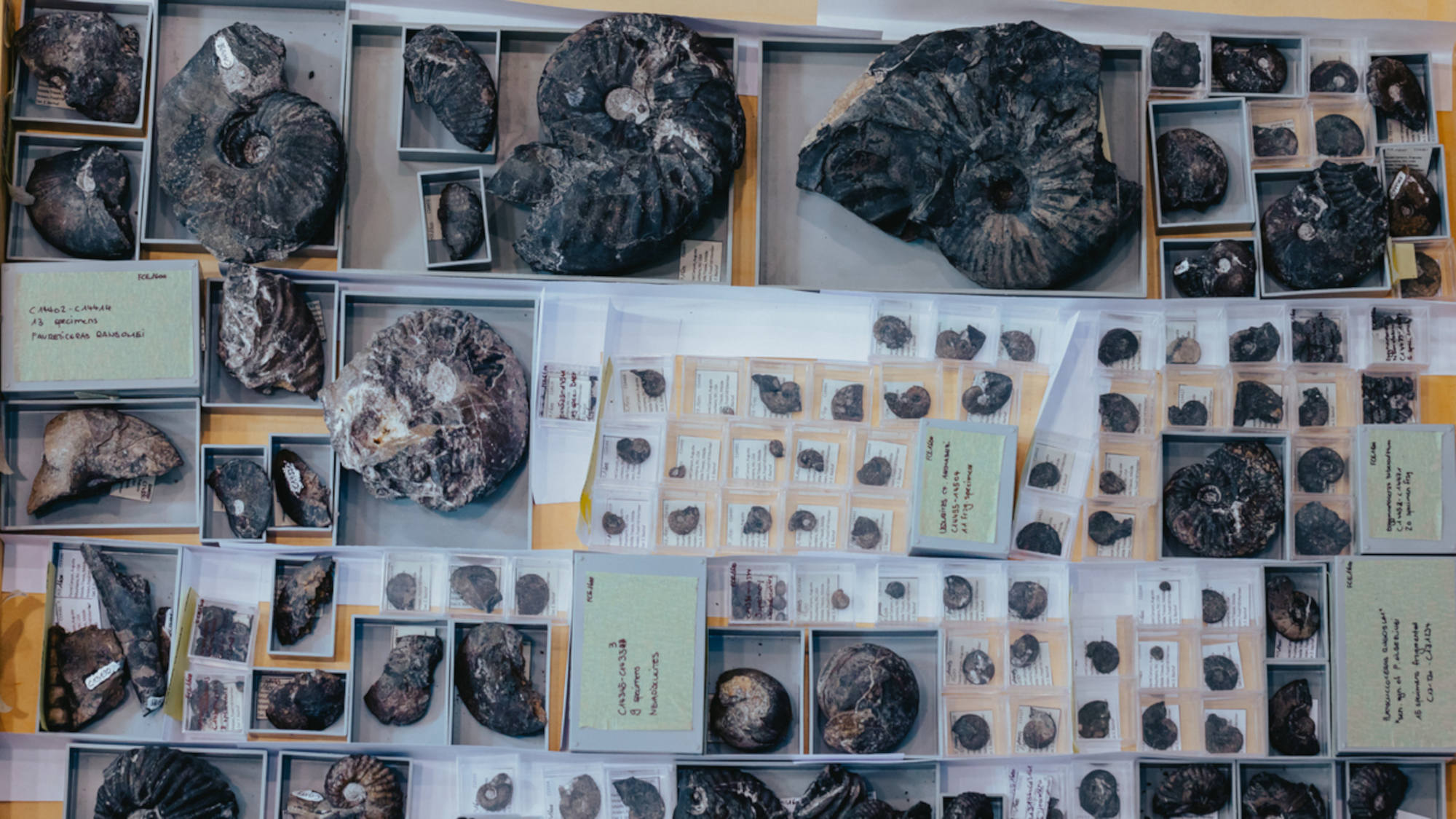
© Matej Meza / Universität Bremen
Have You Heard of... the Geosciences Collection?
Around 220,000 specimens tell stories about the Earth’s history
From the lower jaw of a mammoth to a giant deer skeleton – the University of Bremen’s Geosciences Collection houses many fascinating specimens. Fossils, skeletons of extinct animals, crystals, and rocks can be found here. The collection is an archive, workshop, research laboratory, and place of learning at the same time. Jens Lehmann, professor of paleontology and head of the collection, and Martin Krogmann, geological preparator, talk about their work.
Mr. Lehmann, Mr. Krogmann, what fascinates you about your work in the Geosciences Collection?
Jens Lehmann: The work is incredibly versatile and many of the specimens are accompanied by interesting stories. I have been working as a curator of the collection for almost 25 years now and have of course seen and read a lot during that time. The task of scientifically describing and classifying a shark tooth, for example, is mundane at first glance. But the longer you examine it, the more fascinating the fossil becomes, due to the questions which arise. What kind of animal was it, what species were there, where did they live? But also: How was the tooth found, why was it collected in the first place, and how did it get into the collection? All these different facets of a specimen make the work exciting again and again.
Martin Krogmann: Sometimes we collect specimens during our scientific excavations. In the short time we are there, there is often no opportunity to find out exactly which fossil is in the rock. If it looks promising, we’ll take it with us. It is prepared in the workshop and only then you notice what is really hidden in it. That’s always exciting.
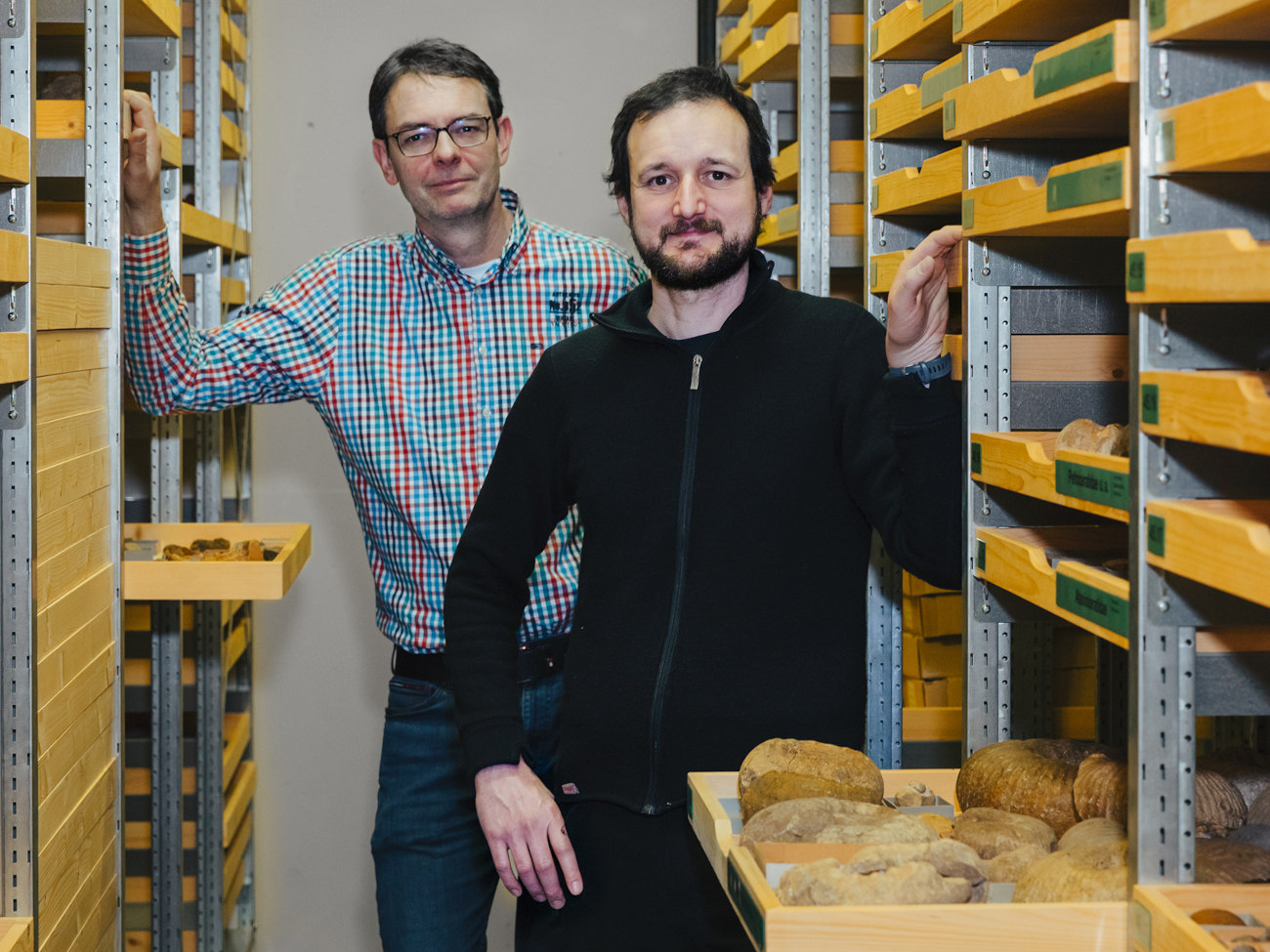
© Matej Meza / Universität Bremen
How did the collection come about in the first place and what is its purpose at the university?
Jens Lehmann: In 1994, the university took over the geological-paleontological collection of the Überseemuseum. This was the basis for today’s geoscientific collection. The specimens in the museum collection have been collected by scientists as well as by merchants and seafarers all over the world. We then worked here to record and expand the collection – both with finds from our own research excavations as well as with donations that we receive, for example, from people who collect fossils in their spare time.
Martin Krogmann:The collection serves, among other things, as an archive. However, the collection is used for more than display; we conduct research on the specimens in the collection and write scientific articles about them, offer courses for students from the geosciences and organize a Geosciences Working Group for interested citizens. In addition, this is one of only a few scientific preparation labs in Germany. Our tasks are just as diverse as our specimens!
What exactly do you do in the preparation laboratory?
Martin Krogmann: Almost all finds that researchers bring from excavations or that other people send to us are examined at my lab table. The fossils often need to be extracted from the rock that surrounds them. For larger fossils, I work with a hammer and chisel. For smaller finds, I use small pneumatic hammers and work under the microscope so as not to destroy details. If the specimens are even smaller, chemical methods are sometimes used – for example with fossilized single-celled organisms. I can release them from the rock with chemicals and then look at them under the microscope. It was particularly interesting to work on the finds from our research project in the Nevada mountain desert. Together with a colleague, I prepared about 8,000 specimens.
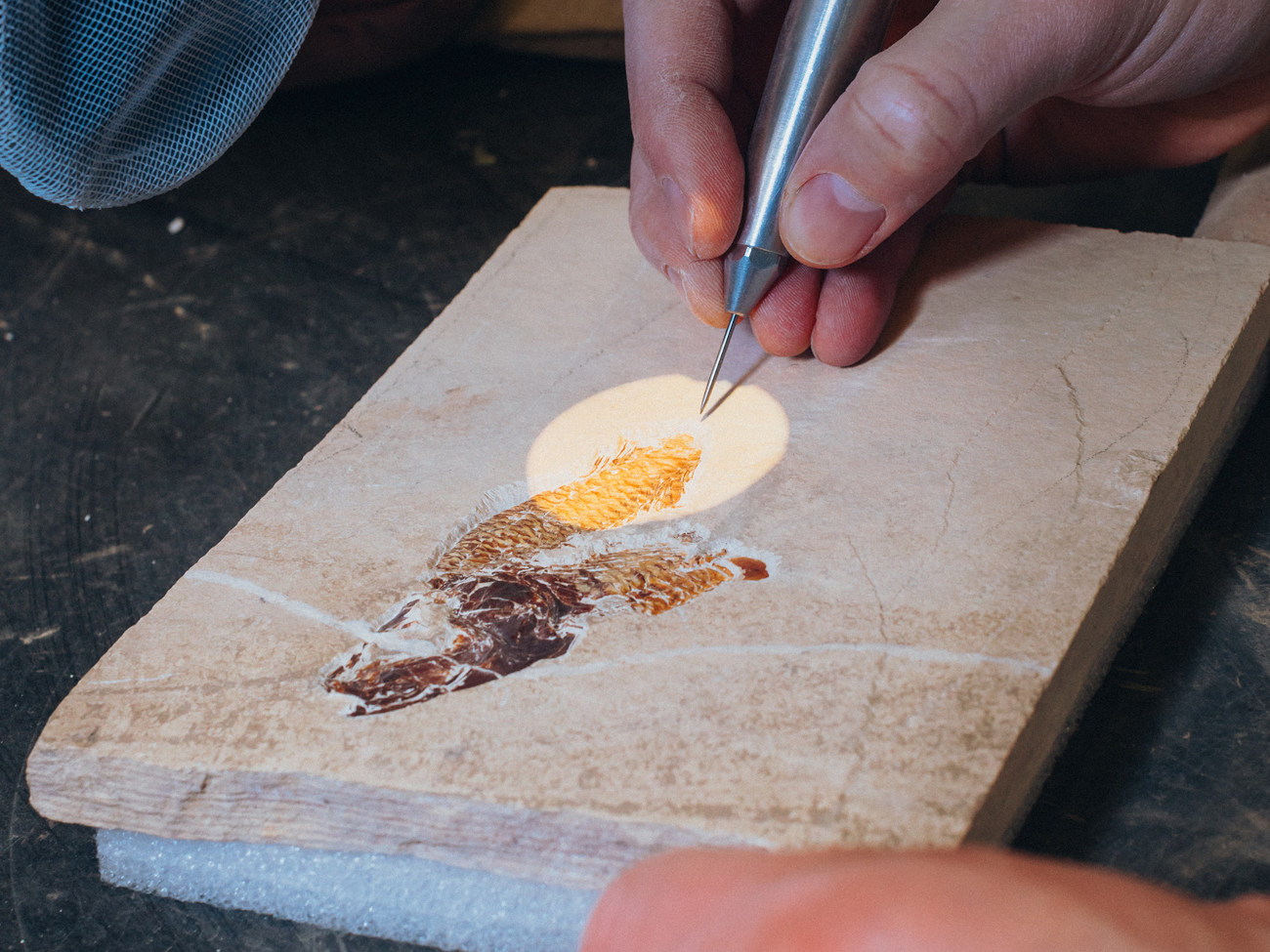
© Matej Meza / Universität Bremen
What did you examine in detail during the research project in Nevada?
Jens Lehmann: We carried out the project from 2017 to 2020 with funding from the German Research Foundation (DFG). We researched ammonites, which are extinct animals related to cuttlefish. We wanted to find out how their shape has changed over the course of evolution and what environmental influences played a role in this. In the course of our research, the project developed in a slightly different direction than planned. This is often the case with paleontological research, because we do not know in advance what kind of specimens we will find and what can be read from the data.
Are there specimens in the collection that you particularly remember?
Jens Lehmann: A highlight of our collection is a completely preserved skeleton of a giant deer. This is an extinct species that was native to Ireland, among other places, 20,000 to 30,000 years ago. It is very rare to find not just individual bones from one animal, but a complete skeleton. This was already the case about 130 years ago, when the Überseemuseum bought the deer from Ireland for a large sum. Today, it is almost impossible to purchase such a specimen.
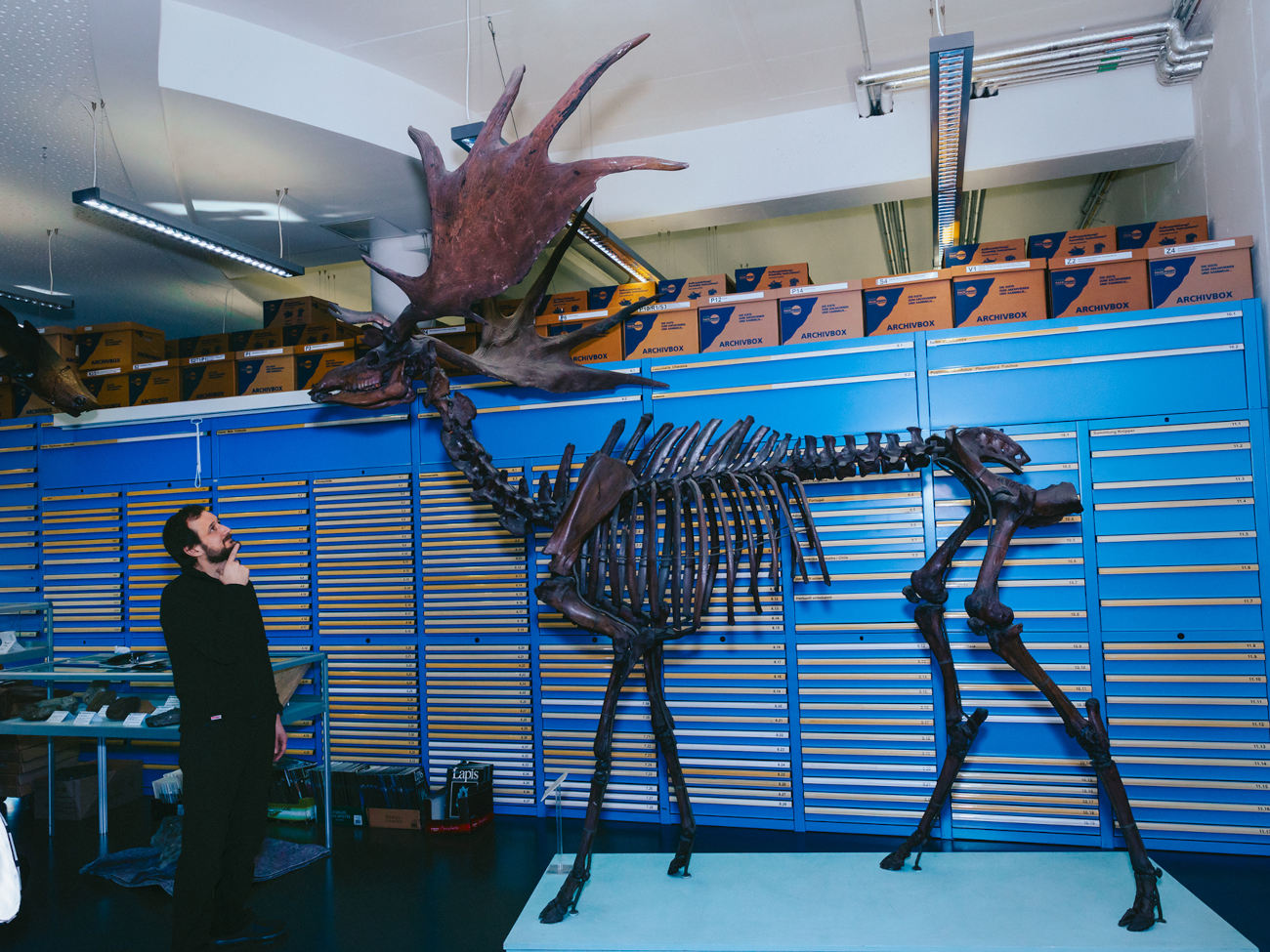
© Matej Meza / Universität Bremen
Martin Krogmann: One specimen that has attracted a lot of attention here in Bremen is the lower jaw of a mammoth, which was found in the Weser in 2006. It was then brought to us to be preserved and stored. We put it in a tub with an industrial immersion heater and added a mixture of water and wax. Then we heated everything for months, so that the wax penetrated into the bones and replaced the water. In this way, the bone was strengthened and saved from disintegration. We were not surprised at first about such a find here in Bremen. What is interesting, however, is that it is a random find – the jaw had gotten caught in a fisherman’s cage.
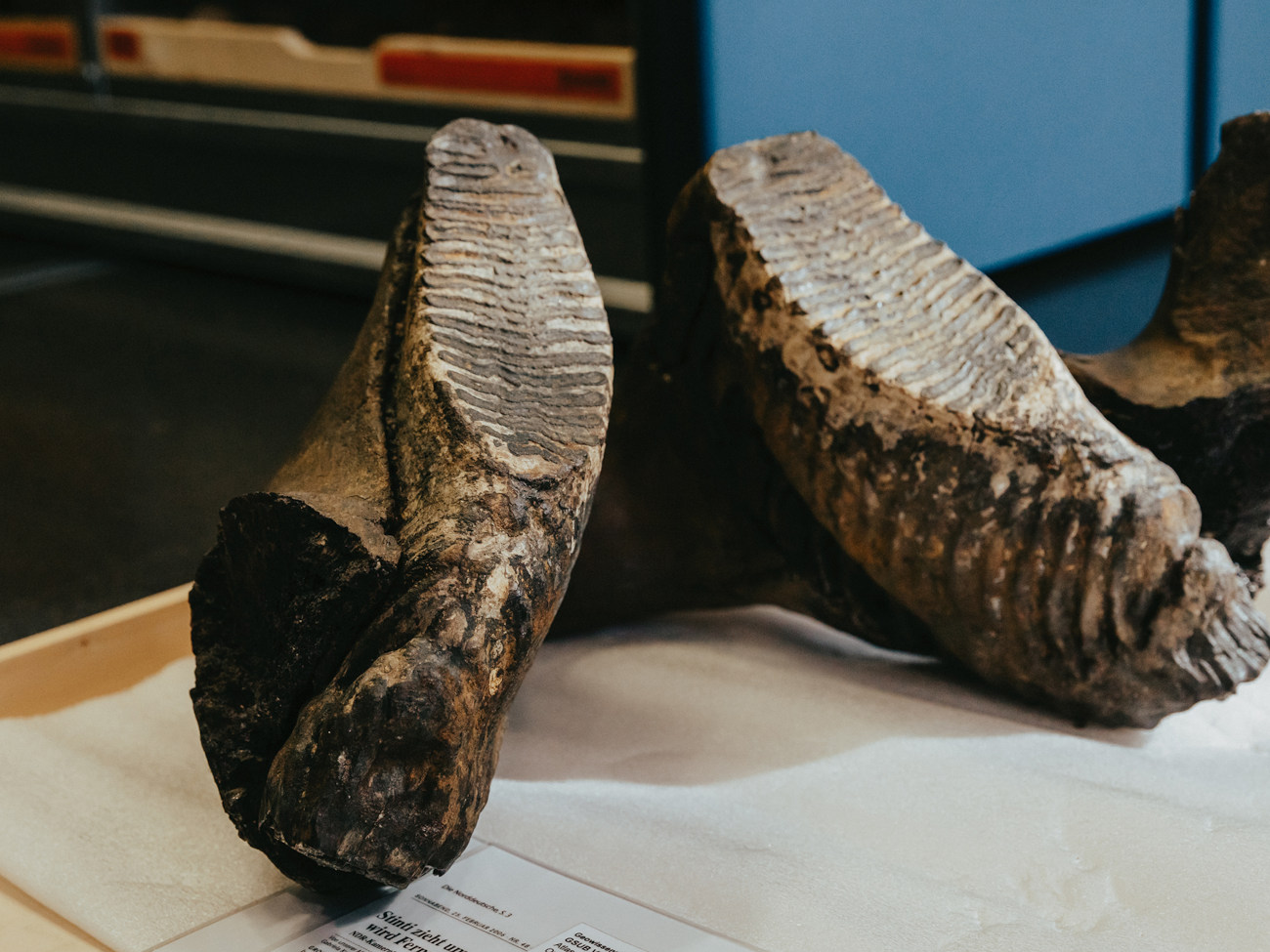
© Matej Meza / Universität Bremen
Is it common for non-scientists to hand over finds to you or work with you?
Jens Lehmann: This form of exchange is very important to us and we are of course happy to be of interest to non-scientists. Recently, for example, a hobby collector handed us 600 fossils of sponges from a pit near Hanover. He cut them all out of the rock by hand at the end of his workday and on weekends, over a period of about ten years. It is rather rare that we get such an extensive collection. But there are a few additional ways to work with us and get insights into the collection. Affiliated with the collection is our Geosciences Working Group where we report on our work and provide the opportunity to carry out projects on specimens from our collection. We also bring our specimens to events such as Open Campus. We notice repeatedly how fascinating these remains from the past millions of years are – not only for us.